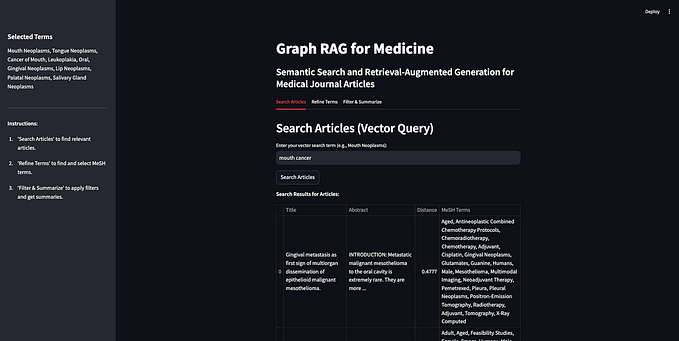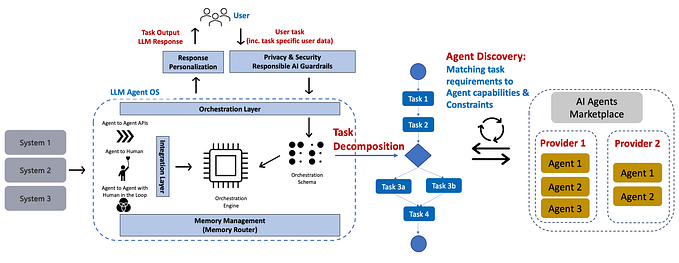Implementing AI in the Advertising Industry | Towards AI
Making A.I. Work for Advertising
Take A Walk On The Wild Side

You are a digital advertising professional. You either own or have access to vast amounts of information to help you, hopefully, deliver the right message to the right person at the right time and not freak them out with how much you seem to know about them.
You are also keenly aware of what is happening in the media world. We are at the same time amazed complacent at how A.I. is being used to recognize your friends in a photo from the beach or how you can use your phone and ask for the nearest pizza place.
A.I. feels like it should be a great tool to add to your marketing arsenal. The basic principle is very straight forward. Take the same pattern recognition tech that can recognize a kitten in a photograph and turn it loose on behavioral data and watch what emerges. We are already seeing success in other pattern recognition applications that yield impressive results such as medical diagnosis or playing Jeopardy. These techniques are getting better and better at finding patterns in seas of information. However, there are some hurdles to overcome along the way. Here are three important ones; hype, vendor lock and no frame rate.
Hype
Skynet is coming! We are all going to lose our jobs! This is bigger than FIRE! Companies are placing big bets on A.I., including many of your larger competitors in advertising. It’s what all the cool kids are doing. There is a fear of falling behind if you aren’t fully embracing all of this. Don’t get me wrong, there is huge potential here, but we are dealing with the fog of hype. Great demos but sketchy results. It’s all so new and feels so important but how do you really make it work as an advertising tool with everyone shouting? It is very exciting, but it is also very early in the game and hard to know what the right first moves are.
Vendor Lock
Companies adding A.I. magic to their products are doing so in ways to keep you locked into their solutions. They do this for obvious reasons. However, we are way too early in the development of this technology to start locking in specific vendors. Some will claim the ability to incorporate 3rd party data. While this may be true, it still commits you into their way of thinking and their approaches.
No Frame Rate
SMPTE (Society of Motion Picture and Television Engineers, the good folks that gave us standard TV color bars) was formed in 1916 as movies were being invented. Their first standard in 1917 was the frame rate for playing movies (24 frames per second). The business of digital advertising is full of such technical standards; display banner sizes, VAST, OpenRTB etc. A.I. digital marketing standards have not yet emerged. How do I effectively measure and compare results? How do I take something I learn from one vendor and apply that across the board? Can I mix and match solutions? These are the types of questions that need answering to turn this into real business and marketing tools.
Question: What’s An Advertising Futurist To Do?
Answer: Take a 21st Century Approach
Technology development is not what it used to be. In the 21st century it goes something like this. Create something really cool, give it away, encourage and support as many people as you can to use your cool thing, make money further down the road. This is precisely what Google is doing with their A.I. tool TensorFlow. It’s completely free and open source. Google now happily sells you cloud services to run your model and provide custom chips for your hardware application. Could you imagine Microsoft giving DOS away in the 80’s?
Here are the first two things to do.
1) Free The Data
Gulp, this is very scary for people in the data business. It must be done however, in a secure way that respects ownership and value, but it must be done. The whole will be greater than the sum of the parts.

This is hugely important as A.I. and machine learning needs data and lots of it. In other A.I. branches, there are standard databases available to build training models and assess results. ImageNet for example, is a collection of over 14 million categorized images to help train and test image recognition systems (yes, there are a lot of kittens).
Advertising needs the equivalent of ImageNet, a large enough set of data that allows for independent research and validation. Without it, we are stuck in the 20th century.
This information needs to come from a variety of sources, methods and approaches. Seeing patterns in a tapestry requires many different colored threads. Freeing the data enables people to:
- Try different machine learning models for research
- Test and train their data against these models
- Add data to this data set to improve it
- Access and expand on other’s work
This can be done in a way that respects all the issues that will be raised. The challenge will not be technical but emotional. It requires fears to be overcome for the greater goals.
2) Create The Playground

MNIST (Modified National Institute of Standards and Technology database) is a database of 60,000 handwriting samples of numbers. It is used to train and test machine learning handwriting recognition. The dimensions for each digit writing sample is normalized to 28 X 28 pixels. The output of a test is expressed as an error in percent.
Our advertising system needs a set of standards to be useful. Just like the OpenRTB system (the protocols that let buyers and sellers bid on advertising slots) created a market place and helped drive growth in digital advertising, A.I. advertising will need some agreed upon structure so everyone can play together.
This needs to go beyond simply how data is stored. It needs to be made ‘A.I.’ friendly. The goal is to provide a platform where different models and techniques can be developed, tested and integrated across party lines. Think GitHub for A.I. advertising.
Why Do This?
This requires effort. What are some of the benefits?
Finding patterns in the data. A.I. is very good at finding patterns that humans cannot see. This lets us discover potential patterns in the oceans of behavioral data collected every day. We have access to show views, clicks, web visits, store visits, restaurant outings. Are there patterns to be discovered? Patterns that machines are better suited to finding?
Lower the research cost, lower the friction. Applying A.I. and machine learning technology to narrow data sets is challenging and expensive. Having access to a large, rich and standard data sets to test both new models and the affects of the addition of smaller focused data sets makes progress possible. It is hard to imagine researching digit recognition without MNIST. Without it, projects become huge and unmanageable. With it, those projects are easy to execute. The same is true with what we are proposing. Testing a novel approach, or a theory about behavior and advertising without something like this is prohibitively hard. History shows that this approach brings the nearly impossible within reach of everyone.
Categorization. One thing that A.I. does well is to categorize data nuggets. Is this picture a kitten? Is this mole skin cancer? Accurately grouping people in new and subtle ways is enormously valuable. Is this person likely to own a cat? Are they in the market for a new car? What are the other profiles that we can invent based on panel data? What about media? Can we get deeper insights into who is watching what and why?
Applications. It is often difficult to predict how research turns into practical applications. Here are just two examples that come to mind.
Real time decisions. There is an infrastructure in place that allows advertising decisions to be made in real time based on market forces. Viewers deemed more valuable can fetch a higher price with that decision being made within 500 milliseconds. What if you could make a better decision based on an A.I. driven result? Just like Facebook can recognize your images of your friends, real time bidding platforms can recognize more subtle and valuable kinds of viewers.
A.I. assisted media planning. Media planning is a combination of art and science. What if there was a tool that helped predict how advertising would perform based on past data? Given certain goals, it could help make recommendations the way Netflix recommends movies. What if it could give you a ‘pre-Nielsen’ rating prediction?
SIMC and Pure Strategy are assembling a group of advertising technologist, A.I. experts and data innovators to create this platform. If you are interested in joining or simply getting more information, please contact:
Dan Lovy
dan.lovy@simc.tv
About SIMC — Social and Interactive Media Consortium. SIMC focuses on a standards based approach to advertising technology. Dan Lovy is executive director.
About Pure Strategy — Pure Strategy brings artificial intelligence to business analytics so companies can get better ROI on data collection programs, improve customer experience and make better products. Using deep neural networks and machine learning, we create a personalized AI to understand unstructured data. Briana Brownell is Founder and CEO.








